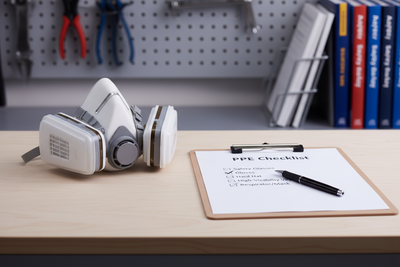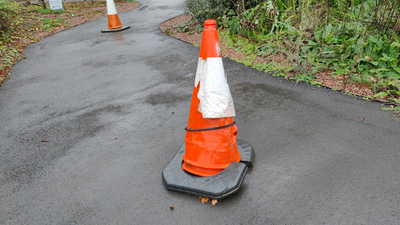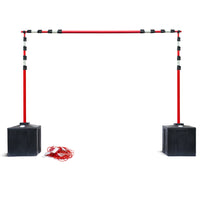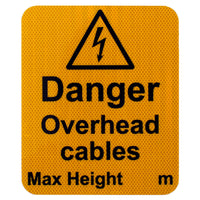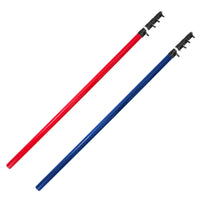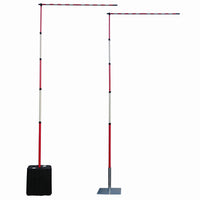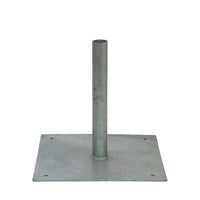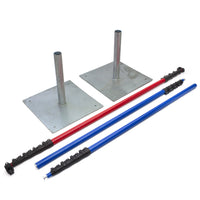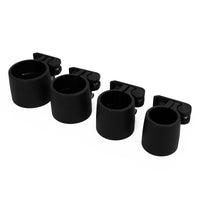GS6 Guidance: How to Avoid Danger from Overhead Power Lines
Working near overhead power lines (OHPLs) carries significant dangers - from life-changing injuries to tragic fatalities. Even experienced workers can underestimate the risks when planning or conducting routine tasks near live electrical infrastructure.
To help prevent these incidents, the Health and Safety Executive (HSE) published GS6: Avoiding Danger from Overhead Power Lines - a practical and widely respected guidance note. Whether you’re operating plant machinery, erecting scaffolding, or managing a site with high vehicles or equipment, GS6 provides the essential safety framework you need.
In this guide, we’ll explore what GS6 covers, who it applies to, and how to implement it effectively to safeguard your team and operations.

What Is GS6 Guidance?
GS6 is a guidance note published by HSE that outlines best practices for preventing accidental contact with overhead power lines. While it’s not legislation in itself, GS6 complements legal requirements and helps businesses comply with:
- The Health and Safety at Work etc. Act 1974.
- The Electricity at Work Regulations 1989.
- Construction (Design and Management) Regulations 2015 (CDM).
The document covers key areas such as risk assessment, safe systems of work, exclusion zones, and emergency procedures. Its recommendations apply across a wide range of sectors - especially those that involve working with tall equipment, mobile plant, or temporary structures.
Who Needs to Follow GS6?
GS6 applies to anyone working near overhead lines, including:
- Construction professionals (crane operators, scaffolders, site managers).
- Agricultural workers (especially using sprayers, combines, or high trailers).
- Utilities and telecom engineers.
- Transport and logistics operators.
- Event organisers erecting tents, marquees, or stages.
Even short-term projects or temporary site access can carry risk. Ignoring GS6 guidance can result in enforcement notices, prosecution, or worse – avoidable harm to workers and the public.

Why Are Overhead Power Lines So Dangerous?
Overhead power lines may appear harmless and safely out of the way - but they can carry anywhere from 230 volts to over 400,000 volts. Injuries occur not just from direct contact, but also from electrical arcing, where electricity jumps through the air to reach a grounded object.
In fact, the Health and Safety Executive estimate that two people are killed by contact with OHPLs each year. One recent example included an employee suffered a serious electric shock when he contacted a 33kV overhead power line with an aluminium irrigation pipe while trying to remove a rabbit from the pipe.
After a thorough investigation, it was found that:
- The company had not developed any arrangements for handling irrigation pipes even though irrigation was a key part of the business.
- It would have been relatively practicable to have stored the pipes away from the OHPL. Had this been done, the pipes could have been handled safely.
As a result of these failings, the company was prosecuted and fined £3,000, plus court costs.
Common risks from OHPLs include:
- Cranes or tipping vehicles raising buckets into contact.
- Ladders or scaffold towers positioned within the exclusion zone.
- Farm machinery entering fields without considering safe clearances.
- Deliveries or site access by drivers unaware of line locations.
- Weather factors such as high winds or rain increasing arc distances.
A typical overhead cable may sag or move depending on the temperature, making clearance harder to judge. The consequences of an incident are often immediate and irreversible - burns, cardiac arrest, or even death.

GS6 Safety Measures: What You Should Do
GS6 is structured around five core areas of safety planning and response. Implementing these properly can reduce risk significantly.
1. Planning and Risk Assessment
Start with a thorough site survey to identify any overhead lines - not just those directly above your work area. Early engagement with the local Distribution Network Operator (DNO) is crucial.
A DNO is a company that manages the electricity distribution system within a specific geographic area, delivering electricity from the grid to homes and businesses.
Key actions in stage 1:
- Mark lines clearly on site plans and drawings.
- Confirm voltage and minimum clearance distances.
- Identify any work activities that could breach safe zones.
- Incorporate findings into your risk assessment and RAMS.
2. Define and Enforce Safe Zones
It’s important to look at defining and enforcing your safe zones as part of the project planning process. Once you have determined whether any OHPLs could cause a hazard, it’s important to put into place a number of control measures to reduce the risk of injury.
Control measures include:
- Physical barriers like goalposts at site entrances.
- High-visibility bunting or barriers to mark danger areas.
- Permit-to-work systems for activities near lines.
If your work must cross into an exclusion zone, it should only proceed after consulting the electricity provider, who may suggest line diversion, temporary disconnection, or supervised working.
3. Signage and Physical Controls
Make hazards visible and unmissable. Many overhead line accidents occur because workers weren’t aware of the presence of cables until it was too late.
Best practices:
- Use warning signs at ground level and at height
- Mark entry points and restricted areas with durable signage
- Consider lighting or reflective markers for low-visibility conditions
4. Training and Daily Briefings
All workers - not just equipment operators - should understand the risks of OHPLs. Include line awareness in site inductions, toolbox talks, and pre-start briefings.
Topics to cover:
- Recognising overhead lines and clearance distances.
- What to do if lines are hidden by vegetation or infrastructure.
- Safe manoeuvring of plant and lifting equipment.
- Importance of spotters and banksmen for tall vehicles.
- Training should be refreshed regularly and tailored to the site’s specific risks.
5. Emergency Preparedness
If an overhead power line is struck or arced:
- Stop work immediately.
- Do not approach the vehicle or equipment involved.
- Remain inside the cab unless it’s on fire or unsafe.
If you must exit, jump clear without touching the ground and vehicle at the same time
Have your local electricity operator’s emergency contact number clearly posted. You must also report serious incidents under RIDDOR regulations.
What to Do If a Power Line Is Hit
Even with precautions, incidents happen. Here’s a quick checklist:
- Warn others and cordon off the area.
- Stay in the vehicle unless in immediate danger.
- If exiting, jump clear and land with feet together.
- Do not re-enter until the line is declared safe.
- Call the DNO and emergency services.
- Report to HSE under RIDDOR, if applicable.
Note: RIDDOR = Reporting of Injuries, Diseases and Dangerous Occurrences Regulations.
Document the event, review your procedures, and take corrective action to prevent recurrence.
But Who is Legally Responsible?
Responsibility is shared across the project:
- Employers must provide a safe working environment and assess risks.
- Principal Contractors must plan for safety and coordinate subcontractors.
- Workers must follow instructions and report safety concerns.
Ignoring GS6 could lead to enforcement notices, HSE prosecutions, or even corporate manslaughter charges in severe cases. Insurance providers may also reject claims if guidance was knowingly ignored.
Helpful Tools and Resources
- Download GS6 from the HSE.
- Find your local Distribution Network Operator (DNO).
- Watch HSE safety videos on YouTube.
- RIDDOR reporting guide.
GS6 isn’t just a box-ticking exercise - it’s a vital part of fostering a culture of safety on your site.
Each year, lives are lost because the risks of OHPLs were underestimated. By embedding GS6 principles into every phase of your project - from planning to delivery - you protect people, prevent delays and demonstrate a proactive approach to safety.
If your project involves tall machinery, elevated work, or access near utility infrastructure, start with GS6. It could be the difference between a safe, successful job and a life-changing incident.
If you’re starting a project where OHPLs could pose a potential risk, get in touch with the Start Safety team about the right products for you.
- Author
